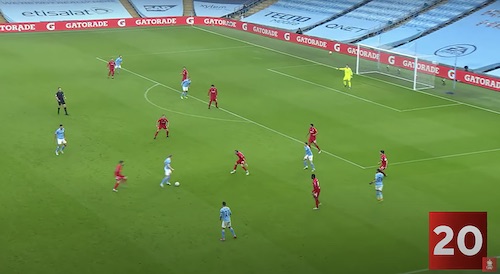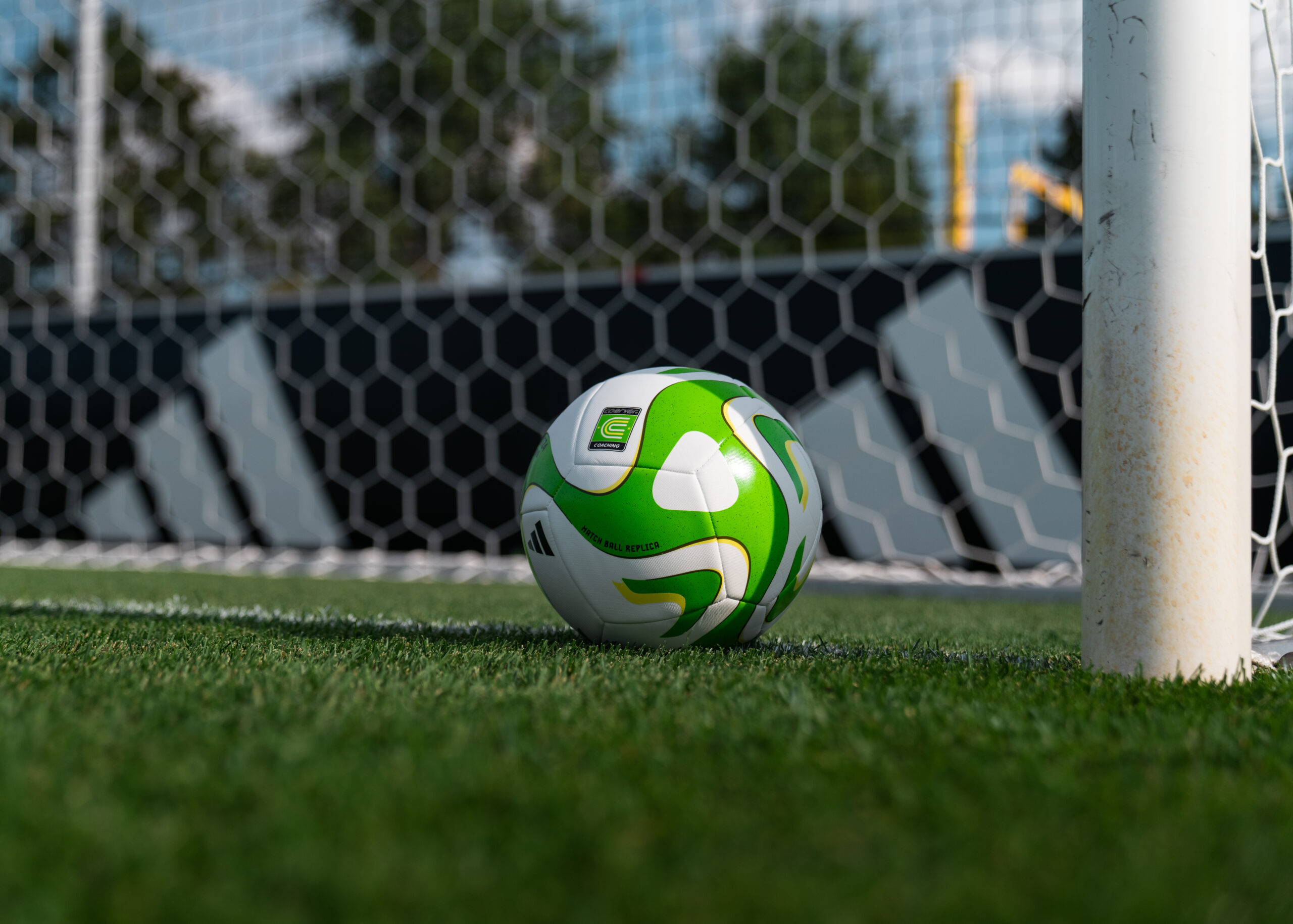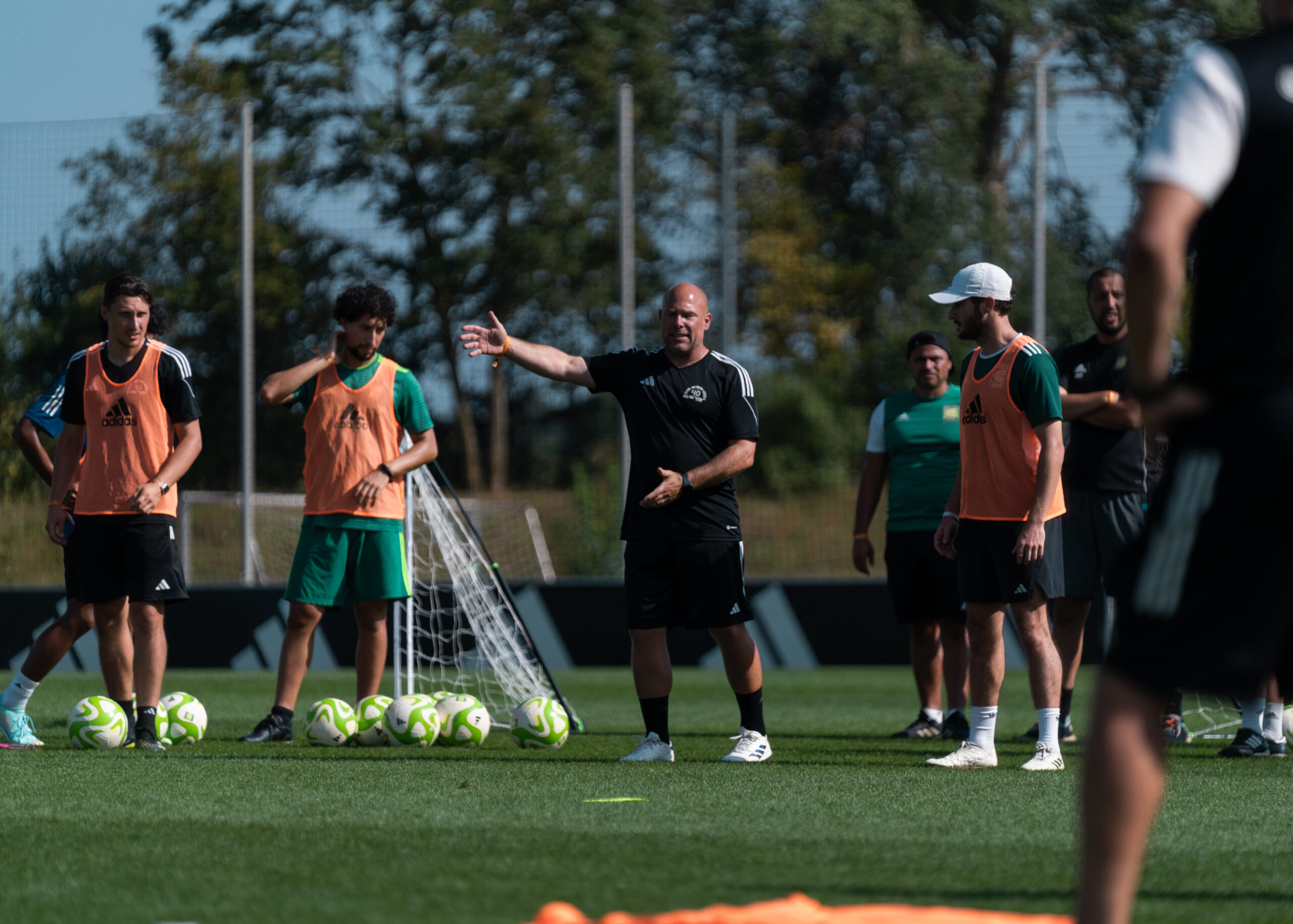Creating soccer passing patterns: While you can’t predict the twists and turns that every soccer game brings, the team can and should run through patterns of play at a slow pace to start and then eventually at a game like pace to simulate live soccer playing conditions.
Soccer Patterns of Play
Essentially, it’s like setting up a dress rehearsal—except that instead of wearing the team uniforms, you wear the mentality and the effort you hope to create during the actual game as you walk through a series of passing movements. Through these soccer passing patterns you’ll learn to read the game better.
The idea with soccer passing patterns is to walk through the runs and movements all the players, at each position on the soccer field, will experience during a game. After you’ve walked through the passes and movements you pick up the pace to a jog, and then at a real game like pace. After that, you can add in passive defenders and eventually just go right into a full field scrimmage.
Walk through all the combinations in soccer, from give and goes, to dribble exchanges, to overlaps, to long switches, to the third man running through the middle, dummy plays (let the ball run through to the player behind), angled runs behind the defense, and so on. Walk through them until they are perfect and do them at a faster pace and slowly add in defenders.
Do this all as a team and on a full sized field, making each pass crisp and sharp, as if you’re under pressure by an opposing team. This means each players’ first touch must be sharp and all the passes played to the correct foot, away from an imaginary defender.
Soccer pattern masters Manchester City – manager Pep Guardiola’s team of course knows how all the soccer passing patterns. Watch Manchester City’s incredible team goal as they make 24 passes before Bernardo Silva scores past the Birmingham City keeper in the third round.
Up, Back, Through
Run through passing plays that are common in the game. For example, have a defender, who is positioned on the right side, play a forty yard ball towards the top of the box. There, a forward is checking back to receive the ball with his foot, thigh or chest. This run back by the forward can be just a five yard run, dragging the imaginary defender towards the goal, away from where they want to receive the ball, and creating the space they want to check into and receive the ball.
The forward then lays the ball back to a center midfielder, who plays the ball down the line to the wide midfielder, who crosses the ball into the box. The central midfielder and the forward make near and far post runs, and the wide midfielder picks one of them out with a cross.
FREE Soccer Training Tips from Coerver Coaching: Enter your email address at this link to start your free soccer training tips: Six Steps to Soccer Success. Find Out Why Over 70,158 Coaches Love Coerver Coaching. Learn more about the The Coerver Coaching Method.
This is a very common pattern that’s seen in games over and over in a again. The ball is played up to the forward and then back to the midfield and through to a player, in this case a wide midfielder, who’s making a run down the line to cross the ball.
Create Soccer Passing Patterns
Next, develop and create your own patterns. For instance, a defender plays the ball into the midfielder, who plays it back to him or her and then serves the ball into the forward. The forward lays the ball back to the midfielder, who then plays the ball to the defender who has made a run down the line.
Then the defender crosses the ball (picking out a player with the cross). Vary the passes, make all the passes in the air, keep all passes one touch, add in a cross-over exchange (where a player dribbles at a teammate and then exchanges the ball), and or make it so all passes are played with the players’ weaker foot.
Again, make sure the passes are sharp and play them away from where a defender would be.
Slowly add more players and increase the number of passes that are made before a cross or a shot is taken on goal. Have a forward or wide midfielder overlap the defender and serve the ball in for a cross; have the midfielder begin the play with a pass to the defender who then plays it to the forward and back to the midfielder. Have the ball played down the line to the defender, who instead of playing in a cross lays the ball back to a midfielder who switches the ball back to the central defender who plays the ball to the outside midfielder on the other side of the field.
Put in Passing Rules
Put in a rule that there must be one switch of the field before they can go towards goal. Tell the players that there must be twenty passes before a cross or shot can be taken. Or, tell the players must have one dribble exchange in the pattern before they can go to goal.
Each set of pattern might contain the types of passes listed below. Put in restrictions or rules where these plays must be included in a pattern of play before the players can score:
- Long diagonal ball
- Driven ball
- Wall pass
- Overlap
- Dribble exchange
- Chip or lofted ball over the top
- Sprint with the ball
- One touch only
- Two touch only
Always try to finish with a shot on goal after running through a few patterns. Also, make sure every player or position gets a touch on the ball before a shot or cross is taken.
Walk Through Scenarios
When working on passing movements and patterns, it’s a good idea to setup certain scenarios and think about what you would do as in a team in those situations. For example, if you have a throw-in near the attacking third of the field or when your keeper has the ball on a goal kick or the ball is in their hands, what will you, in your position do. Think about what ways players would get open to receive the ball, and what kinds of runs would be made off the ball. Walk through these scenarios.
Then, take a look at passing plays when the ball is on the foot of the attacking midfielder or the center back. Who are the players making the runs into the attacking third and what players are offering support. Ideally, what do you want to have happen? Obviously you want to keep possession and try create a goal scoring chance, so what types of runs or passes will be made.
Different Styles of Play
When running through patterns work on different styles of play, everything from direct play, where you try to pick out your forward with a long ball and win the knock down, to slowing the game down, switching the ball from side to side and trying to keep possession, if you have a lead.
It’s helpful to map things out with your team, put each player in their position and figure out where they will make a run or what they are responsible for, when you’re playing a different style of play or adjusting to what the other team might be doing.
Setup Grids on the Soccer Field
Sometimes it’s helpful to create grids on the field with a set of cones marking off the zone where the forward, midfielder, and defenders will operate – just rough area marked off with cones.
These don’t have to be hard and fast grids, as the players can come out of their area to receive a pass or control the ball, but it gives players a good idea of where they most likely will spend most of their time on the pitch. And, it let’s other players know where they will be on the field.
Increase Intensity
Make the patterns game-like by playing the ball with pace and making all of your touches sharp, as if you are under pressure. Start out walking through these patterns and then build up to a jog and finally go to full speed as your team becomes accustomed to the runs (patterns). When you are beginning to run through the patterns at a faster pace, make sure the angles of the passes are sharp and the runs are at a game-like pace.
All the players should try to check back to the ball as if they have a defender on them, and make angled runs back to the ball. These runs don’t have to be long – even just two or three yards (quick cuts). Again, the overall idea is to concentrate and make these patterns game-like, turning them almost into set plays, and to the point where your team could run through them in their sleep.
Once the players are confident with the movements and the passes, add in passive defenders who cut out weak passes and put a little pressure on the players as they check back to receive the ball and make runs.
Rotate Positions
As you move through each pattern or play, say after you’ve run through the patterns a number of times, each player should rotate into a new position. The forward becomes the defender, the midfielder becomes the forward, and the defender becomes the midfielder. This way each player gets a chance to experience playing a new position.















